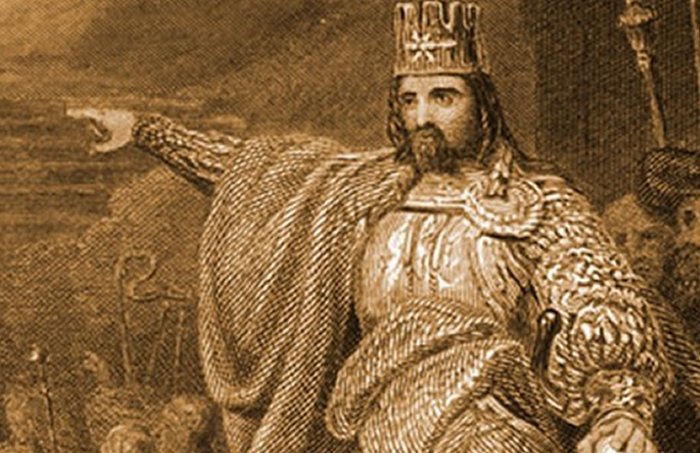Nebuchadnezzar is one of the principle characters in the Hebrew Bible. He was a powerful ruler over the Neo-Babylonian Empire which came to power after conquering Judah and Jerusalem (c. 605 BC). The kingdom had its origins in the earlier empire of Shamash-mudammiq (who ruled 1186–1172 BC) who co-reigned with his brother Adad-apla-iddina (1171–1169), but it was not until Nebuchadnezzar that the empire reached its acme under Nabopolassar. He is an important character both because of his deeds, and his building projects. What are some key events in the life of Nebuchadnezzar?
Key events in the life of Nebuchadnezzar include: His accession to throne (605 BC); His conquest of Judah (c. 605 BC) which included capturing Jerusalem; He desecrated the temple by removing sacred artifacts; He destroyed many cities including Lachish, Timnah, Aijalon Gath, Hebron, Debir—in defense against nomadic tribes from Arabia who were attempting to colonize certain regions along defense lines established during David’s reign over Israel; He built the Hanging Gardens of Babylon; His existence is recorded in tablets found at Borsippa, Babylon, Uruk, Kish, Abu Salabikh, Sippar and Susa—recording his reign from 605 to 562 BC. Nebuchadnezzar was succeeded by Amel-Marduk (Evil Merodach) who reigned for two years (562–560).
Quick Navigation
What are some important facts about Nebuchadnezzar?
Some key facts about King Nebuchadnezzar:
- He is known as “Nebo” which means “to give glory.”
- The Babylonians believed that he had been elevated to godly status.
- In addition, he is said to be the son of Nabopolassar and thus an heir by blood through his father.
- He was a ruler far greater than others before him as it is recorded that he “made all the people of his land serve him.”
Who is King Nebuchadnezzar in the book of Daniel?
King Nebuchadnezzar is one of four main characters found in chapters 1–6 and chapter 4:1-18 in the Hebrew Bible Book of Daniel. He plays a significant role because his actions cause Judah’s downfall and later has visions which reveal truths about God. The Book of Daniel tells how following years after Babylon destroyed Jerusalem (605 BC), Nebuchadnezzar had a disturbing dream that none of his wise men or magicians could interpret. After the king threatened death to those who failed at their task, Daniel requested and was given permission to take on the challenge. Nebuchadnezzar’s dream involved a large statue made of various materials: head of gold, chest and arms of silver, belly and thighs of bronze, legs of iron, and feet consisting partly of iron and partly of baked clay (Dan 2:31-33). The image was destroyed by a rock which became a mountain filling all corners of the earth (2:34). When Daniel explained that God is ruler over kingdoms and that He destroys them as He chooses (2:37) Nebuchadnezzer recognized God’s power and set Daniel in charge of the entire province of Babylon (2:48). The king also had a second dream which was interpreted by Daniel as presaging a succession of four kingdoms—Babylon, Media, Persia and Greece.
Daniel 4 recounts another incident when King Nebuchadnezzar is upset by his dreams and demands that his wise men tell him both what he dreamed “and then you will be clothed with purple and have a chain of gold around your neck…and have authority as third ruler in the kingdom” if they are wrong about the content of his dreams (vv 6–7). When they can’t do so, he has them killed. But Daniel tells the king that is able to reveal what he dreamed (vv 17–18) and the king rewards him by making him ruler over all his dominion (v 19).
Nebuchadnezzar features prominently in chapters 4, 5, and 6 of the Book of Daniel. He first appears as a Babylonian emperor who is frightened by his unusual dream. As he cannot interpret it himself he asks other “kings” (meaning nobles or administrators), magicians, enchanters etc., to tell him what he dreamed about but none can do this until Daniel asks for time to pray for insight into the dream’s meaning. After praying for understanding Nebuchadnezzar realizes that God alone has power over dreams and changes his mind about punishing Daniel for not coming up with the interpretation. Daniel later has another dream which predicts the destruction of a large statue made from various materials, representing kingdoms from Babylon through to the Greek Empire.
In chapter 1, Nebuchadnezzar is a ruler who is kindly towards Judah and Jerusalem after their siege and capture by his armies in 605 BC. He appoints then-exile Jehoiakim as king over Judah while placing all other extant political entities within the empire under his own direct control. In Chapter 2 he finds it necessary to reclaim the land for Babylon’s residents because many of them have defected due to persuasion by Jeremiah (Jer 25:1–7)). Further in Jer 27:12-19 Jeremiah mentions that Nebuchadnezzar will be sent to attack Egypt. In chapter 4 Nebuchadnezzar recounts that he has a dream of a large statue made from various materials representing kingdoms from Babylon through to the Greek empire which God tells Daniel will come to pass. In Chapter 5 he is at first supportive of those who can’t interpret his dream until they are executed when Daniel is allowed by the King’s decree to do so and told that those who claim to be able interpreters but cannot tell him what his dream was will be killed as well.
In Chapter 6, after Daniel interprets the king’s second dream as predicting a succession of four kingdoms, the king makes him ruler over all his dominion and gives him many gifts.
